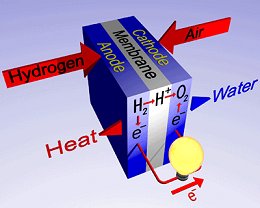Waste Not with Pee Power

Of all of the great things that mankind produces, one of the things of which he is likely least proud is urine.
Constant Wasteful Production
Even so, urine is one thing he produces constantly - tons and tons of it every year, every month, spring, summer, autumn, and winter alike, every day, and every minute.
Man produces so much urine that it is burdensome to get rid of the stuff, those great rivers of urine, smelly, full of bacteria, corrosive - even dangerously so.
Turn on the Lights
What else would some learned and otherwise fastidious people do with all of this nasty urine than to use it for the making of clean and useful electrical power with which to light an otherwise dark world?
Yes. Researchers in the U.K. (University of Bath, Queen Mary University of London and the Bristol Robotics Laboratory) are right now working on the re-design and production of a microbial fuel cell that makes use of urine and less costly electrical collector-conductors than do more typical microbial fuel cells. Others have used various microbes for this purpose, too, for example: the Geobacteraceae microbe family.
Bigger, Better, Cheaper
Many of the advantages brought about by this new design are to be seen in reduction of cost of some of the materials used and the upward scaling of their fabrication. The cost of the urine to be used is mostly due to matters of collection, storage, initial bacterial detoxification, and similar considerations. Packaging and electronic considerations make for most of the expenses.
Up-scaling of electrical power output 100-fold has been shown to be possible by simply doubling the lengths of the electrodes and by stacking several completed fuel cells. The cost of this increase is truly minimal.
How Strange - The Ordinary Costs More
Ordinary microbial fuel cells frequently, if not always, utilize rare and expensive platinum in one of the two internal electrodes required, the cathodes. Manufacture of usual types of microbial fuel cells can thus be quite costly. The new urine fueled model substitutes less expensive carbon fabric and titanium for costly platinum while yet maintaining the same general electricity production levels and transmission speeds.
Urine, of course, is already a low cost commodity. It does not have to be cultivated, grown, harvested or fabricated in a factory. Particularly in many "third world" or otherwise impoverished locales, urine power could be produced right where it is needed for minimal uses - modest lighting, small water pumps, and so on. In other words, these fuel cells would be affordable and still be useful.
NASA Uses Hydrogen Fuel Cells Right Now in Space Exploration Programs
The illustration below that is used with this small report is not that of one of the new microbial-urine fuel cells, for none are to be found as yet outside of laboratory prototypes. Instead, the picture shows an existing type of hydrogen fuel cell that "burns hydrogen" to generate electricity.
There are many problems with trying to use NASA-type hydrogen fuel cells to generate "civilian-use" electrical power, especially in less affluent parts of the world. Probably the biggest problem is the need for input of gaseous hydrogen and a source of oxygen. Getting rid of the combination of those two chemicals is easy enough - it is pure water.
Urine is Not Known for Being Too Explosive
Urine, is not bedeviled with the same kind of problems as is sourcing of hydrogen and some form of oxygen, Just give a person (or a dog, or a cat, or a horse...) a nice cool drink of water and, soon enough, you will have some more urine. There are some problems in dealing with urine, no doubt, but those problems are not equal to the ones posed by using hydrogen gas. That stuff easily burns, explodes, and also escapes out of reach if the users do not do everything exactly right.
It is thus little wonder that many scientific and industrial people have been and still are hard at work developing microbial fuel cells - universities and government agencies alike.
There's Plenty More Information for You
(Go easy on the liquids as you look things up)
More information can be gathered by reference to:
https://www.nasa.gov/vision/earth/technologies/18may_wastenot.html
http://news.nationalgeographic.com/news/2004/04/0412_040412_pulsegeobacter.html#main
http://www.geobacter.org/
http://auto.howstuffworks.com/fuel-efficiency/alternative-fuels/fuel-cell.htm









